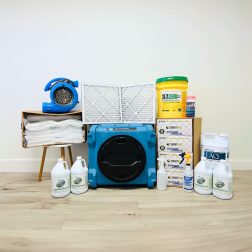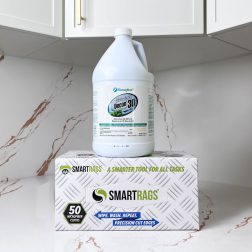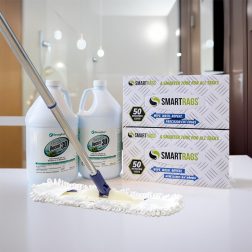Mold Resources
Can Mold Grow on Plastic?
Yes, mold on plastic can occur, but only if there's a source of food and moisture.
While plastic isn't a typical breeding ground for mold, it's still possible for mold to grow on it. The primary component of plastic, synthetic polymers made from petroleum oils, generally doesn't provide a food source for mold, making it somewhat resistant to mold growth. However, this doesn't mean that plastic is completely mold-proof.
Some secondary components in plastics, like plasticizers, cellulosics, lubricants, stabilizers, and colorants, can potentially feed mold. Different types of plastics use different mixtures of these components, and some may be more vulnerable to mold than others.
Additionally, many plastic items, such as food containers and water bottles, are designed to hold food and liquids. If these items aren’t thoroughly cleaned, residual food, dust, or dirt can create the perfect environment for mold to grow. Mold colonies on plastic can often start this way, especially if the plastic is left in a damp area or isn’t dried properly after washing.
How To Get Rid of Mold on Plastic
When it comes to eliminating mold off plastic, it's usually more successful than with more porous materials. The first step is to spray your cleaning product on the surface, allow for the appropriate dwell time, and then wipe it off with a microfiber towel. Repeat this process two more times, using a clean side of the towel each time. It's best to avoid harsh chemicals that could damage the plastic and cause unwanted exposures. I personally recommend Benefect Decon 30. Clean the entire plastic surface or item as well, not just the part with visible mold growth, to eliminate any spores or potential toxin. Once cleaned, make sure to dry the plastic completely. For items like food storage containers or cutting boards that come into contact with food, it’s safest to discard them if mold appears, as cleaning might not remove all the particles. Its always best to err on the side of caution when it comes to your health!
It's also important to note that some plastics are more porous than others, which can make them more prone to mold growth. For example, PVC, often used in home plumbing, is a type of plastic that can be more porous and might need more maintenance to prevent mold.
How to Prevent Mold on Plastic
To prevent mold from growing on plastic, keep it clean and dry. Store plastic items in a way that ensures good airflow and avoids high humidity. Even moisture in the air can contribute to mold growth. Regularly inspect plumbing in your home, especially if it uses plastic PVC pipes, for any signs of leaks. For plastic items like those for food storage, clean them thoroughly and regularly to remove particles like food that mold can use for growth.
Showing all 3 results
-

HomeCleanse DIY
All the equipment and materials we use to remediate your home, plus consultation and support...
-
$5,995.00 – $9,995.00 SHOP NOW -

Mold & Bacteria Contents Cleaning
Remove harmful pollutants that accumulate in the dust of your home. (Options available for renters...
-
$99.00 – $349.00 SHOP NOW -

HomeCleanse Cleaning
Take your cleaning to the next level buying all the tools we use to keep...
-
$299.00 – $549.00 SHOP NOW
Resources:
Still Have Questions?
A member of our team is here to help! Click on “Get Started ➤” below to book a consultation with a member of the HOMECLEANSE team. We have a few quick questions that will help us put together a roadmap to solve or prevent all of your mold problems.
Two minutes of your time could lead to better health for you and your family.
